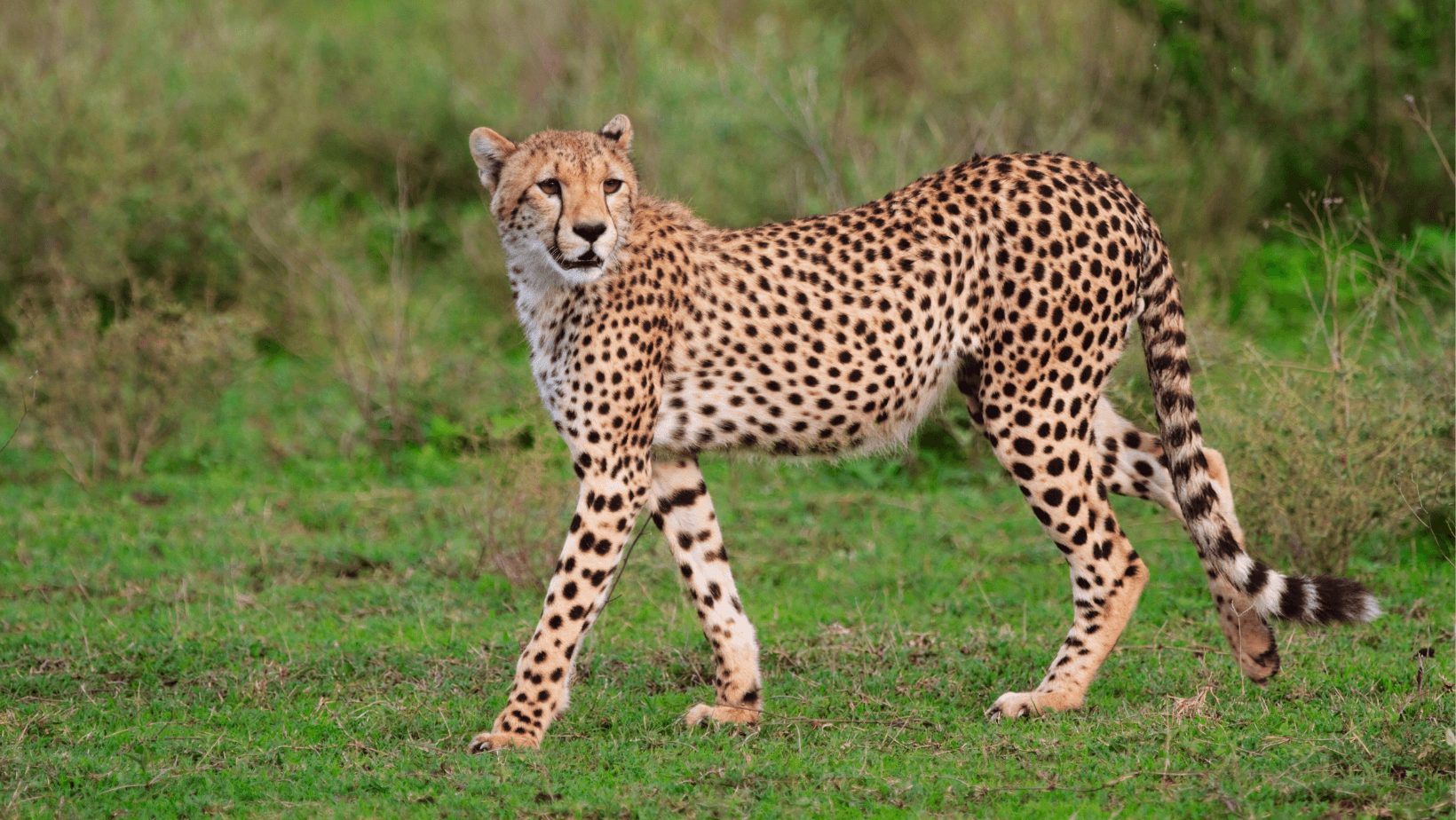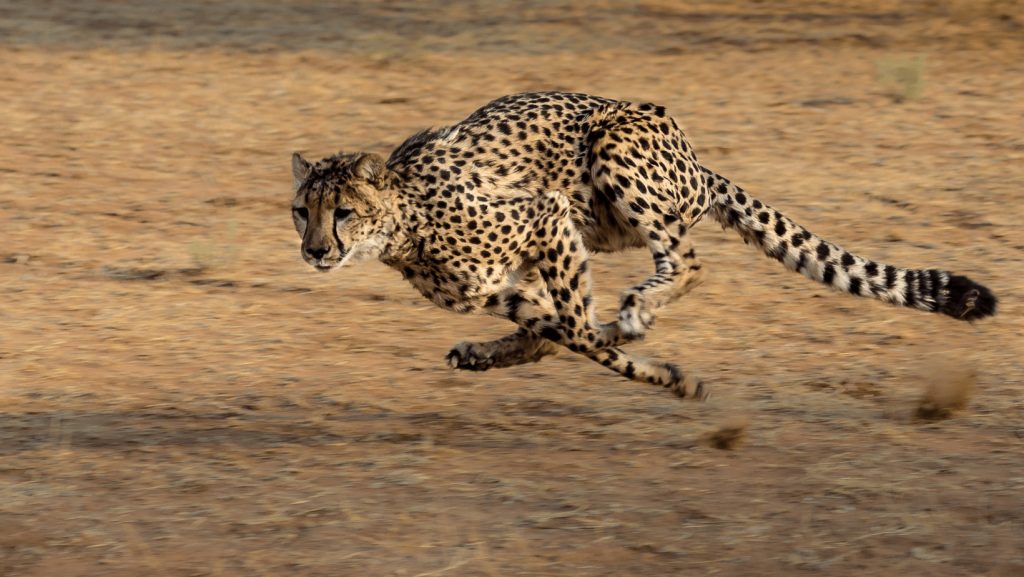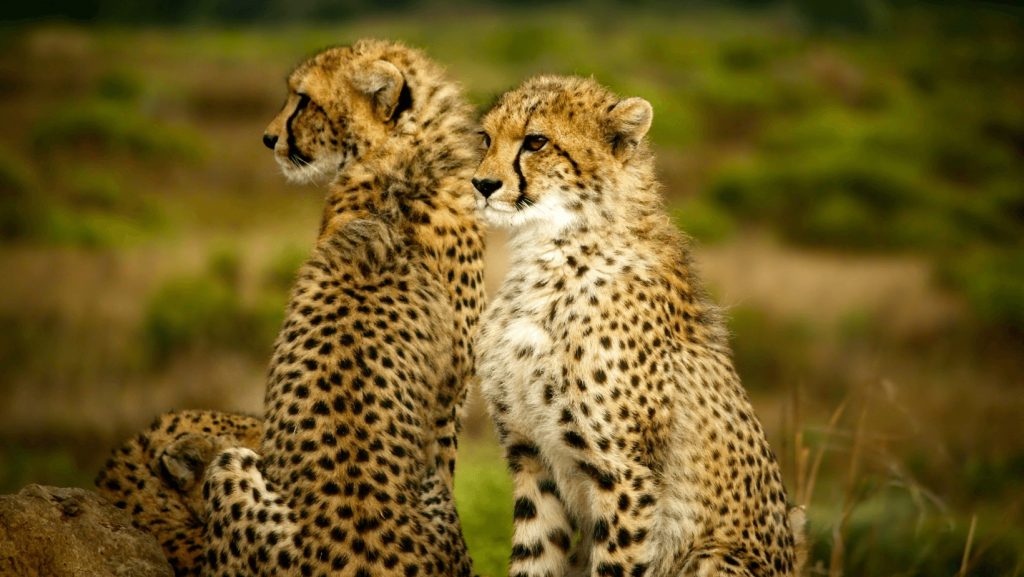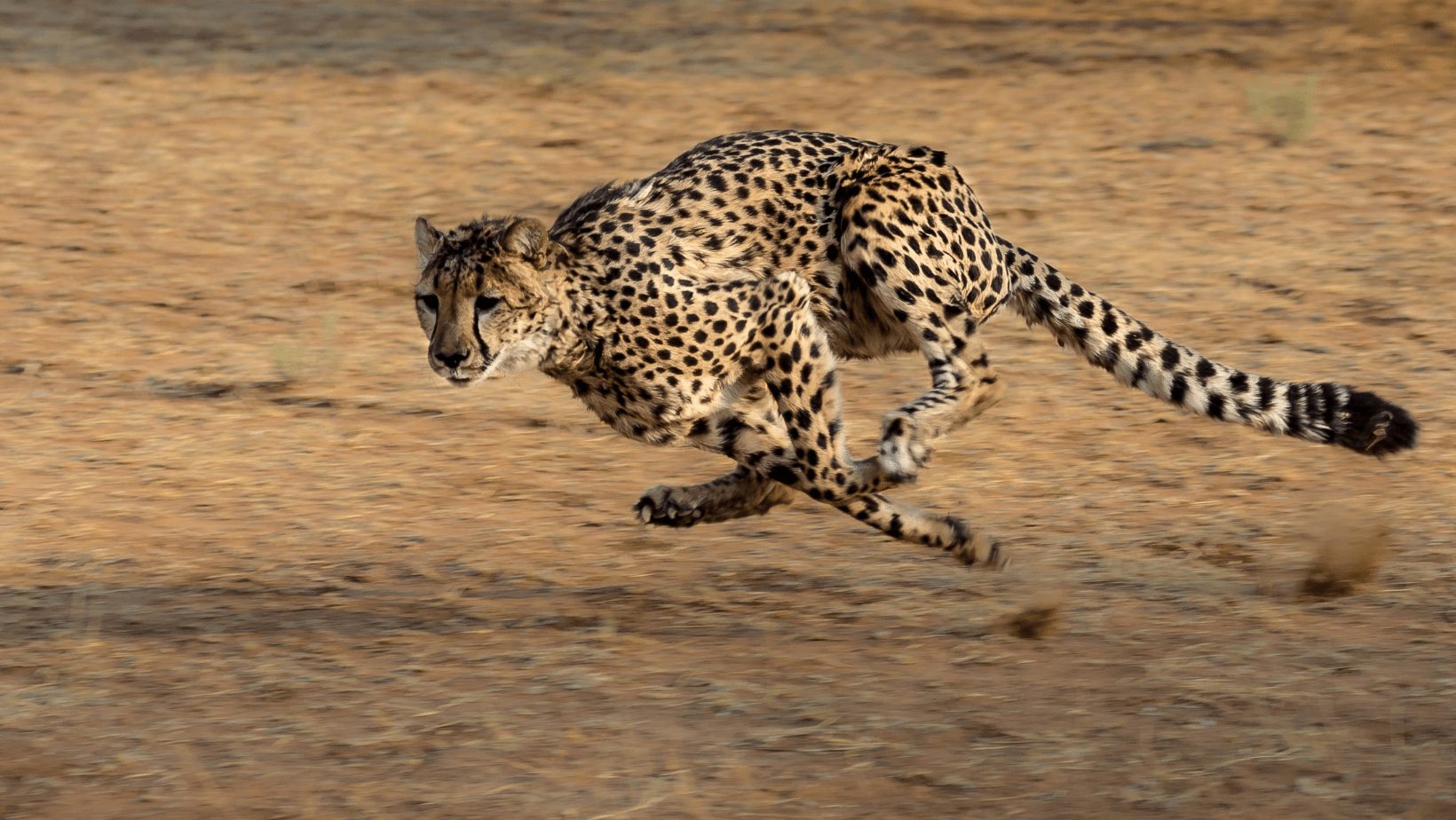
Spotting A Cheetah
The distinctive characteristics of the cheetah include slender, long-legged bodies, small heads with high-set eyes, and black “tear marks” that run from the inner corner of each eye down to the mouth. They are pale yellow or tan in color and covered almost entirely with solid black round or oval spots measuring 0.75-1.5 inches in diameter. Typically only the white fur of the throat and underbelly are unmarked. The spot pattern of each animal is unique, which helps them identify one another.
Their coats can also vary slightly depending on their habitat. While cheetahs typically prefer open grasslands, they live in a range of habitats across eastern and southern Africa. Those in desert regions often have paler coats, which help them camouflage. In southern Africa, some have been observed with a genetic mutation that gives them larger spots and even stripes.
There is some debate as to whether or not cheetahs are “big cats.” Some scientists argue that the term only refers to those that are capable of roaring, including lions, tigers, jaguars, and leopards. While cheetahs can’t roar, they can make a number of other vocalizations, including purrs, growls, hisses, and chirps. But despite the debate, most conservation groups do embrace the wider definition of “big cats” which includes cheetahs, snow leopards, and cougars.

Built For Speed
Cheetahs evolved to enhance their sprinting ability. These adaptations include long legs and an elongated spine for increased stride length, unretractable claws and special paw pads for extra traction, and a long tail for balance. Plus, they also have a large liver, adrenal glands, lungs, nasal passages, and heart to help support bursts of intense physiological activity. While their large nasal passages help supply the oxygen needed to sprint, it leaves little room in the skull to anchor large teeth. As a result, the cheetah’s teeth are relatively small compared to other big cats, so they will often choose flight over fight if confronted by another predator like a lion.
Their top speed averages between 60 and 70 miles per hour, which makes them the fastest land mammals. They can accelerate faster than many sports cars, going from 0 to 60 mph in 3 seconds. When sprinting at top speed, they take about 3.5 strides per second. This speed can only be maintained for roughly 300 yards, so the cheetah uses its exceptional eyesight to locate and stalk its prey first, only beginning the chase when the time is right.
Unlike most carnivores, they are mainly active in the daytime, hunting in the early morning and late afternoon. Their stealthy movements and spotted coat help them avoid detection from their prey, which includes game birds, rabbits, young warthogs, and various species of antelopes. After a successful hunt, the cheetah eats its kill quickly to avoid losing it to competitors like lions and hyenas.

Cheetah Social Structure
Female cheetahs are solitary, living on their own or with their young. They have a large home range, and in areas where their prey is migratory, they will migrate with the herd. Most males either live alone or in a “coalition” made up of two or three males that are often brothers.
Both males and females mate with multiple partners. Studies have shown that cubs of the same litter can even have different fathers. Litters typically have two to eight cubs each. The mortality rate among young cubs can be exceptionally high – up to 90% in the wild – often because of other predators in the area.
Cubs live with their mother for about a year and a half. During that time, they learn and practice hunting techniques with playful games. After leaving their mother, members of the litter usually remain together for up to six more months before the females strike out on their own. The average life expectancy of the cheetah is about 7 years in the wild and 8 to 12 years in captivity.
Weekly Trivia
Enter your guess to reveal the answer.

